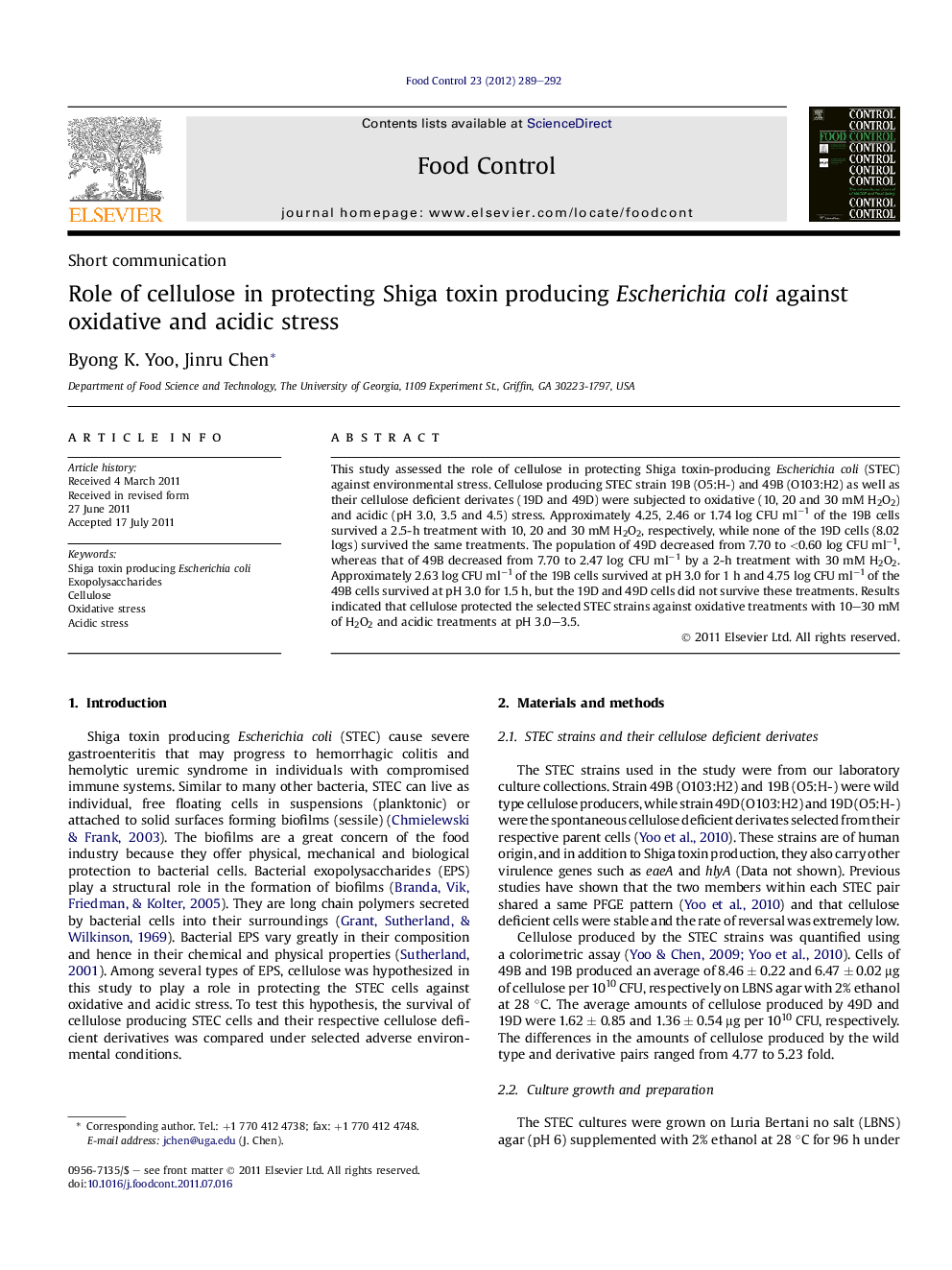| Article ID | Journal | Published Year | Pages | File Type |
|---|---|---|---|---|
| 6393823 | Food Control | 2012 | 4 Pages |
This study assessed the role of cellulose in protecting Shiga toxin-producing Escherichia coli (STEC) against environmental stress. Cellulose producing STEC strain 19B (O5:H-) and 49B (O103:H2) as well as their cellulose deficient derivates (19D and 49D) were subjected to oxidative (10, 20 and 30Â mM H2O2) and acidic (pH 3.0, 3.5 and 4.5) stress. Approximately 4.25, 2.46 or 1.74 log CFU mlâ1 of the 19B cells survived a 2.5-h treatment with 10, 20 and 30Â mM H2O2, respectively, while none of the 19D cells (8.02 logs) survived the same treatments. The population of 49D decreased from 7.70 to <0.60 log CFUÂ mlâ1, whereas that of 49B decreased from 7.70 to 2.47 log CFUÂ mlâ1 by a 2-h treatment with 30Â mM H2O2. Approximately 2.63 log CFUÂ mlâ1 of the 19B cells survived at pH 3.0 for 1Â h and 4.75 log CFUÂ mlâ1 of the 49B cells survived at pH 3.0 for 1.5Â h, but the 19D and 49D cells did not survive these treatments. Results indicated that cellulose protected the selected STEC strains against oxidative treatments with 10-30Â mM of H2O2 and acidic treatments at pH 3.0-3.5.
⺠Cellulose producing STEC cells had a greater tolerance to treatment with H2O2. ⺠STEC cells producing cellulose survived better under acid treatments. ⺠Cellulose assisted STEC to survive under oxidative and acidic stress.
